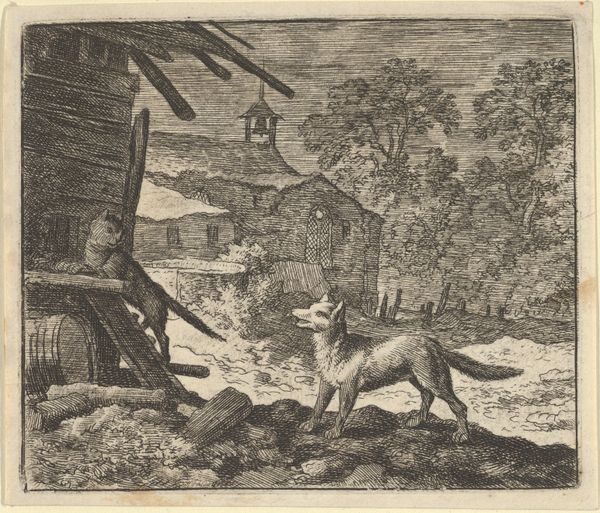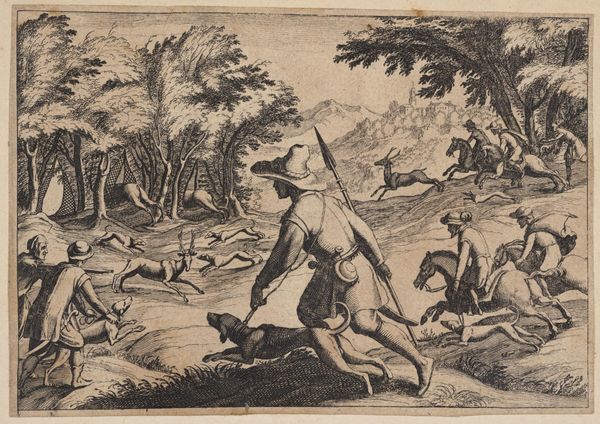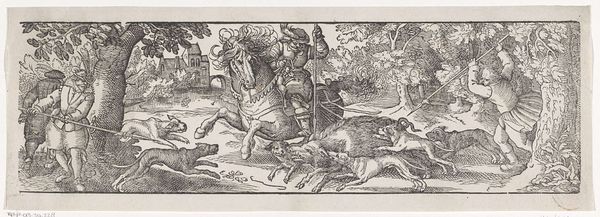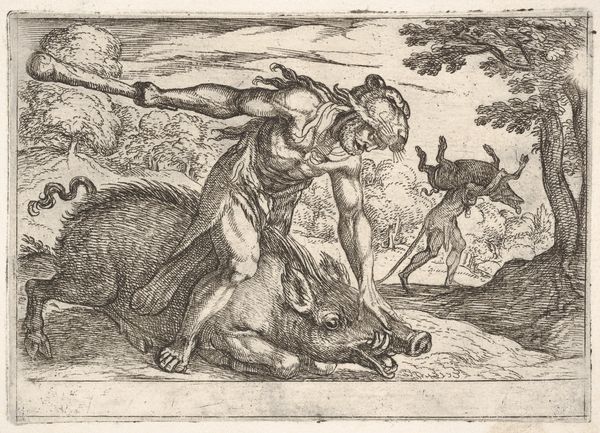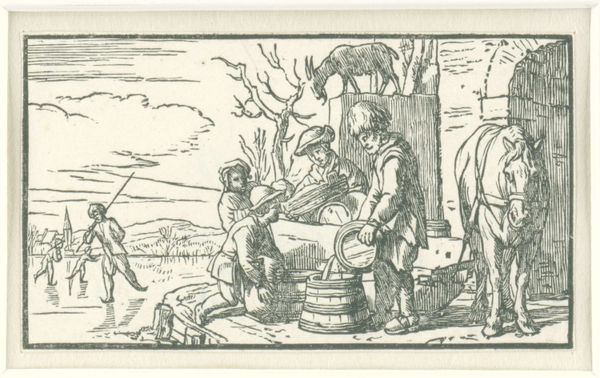
print, etching, engraving
#
medieval
#
narrative-art
# print
#
etching
#
landscape
#
figuration
#
genre-painting
#
engraving
Dimensions: width 186 mm, height 40 mm
Copyright: Rijks Museum: Open Domain
Curator: This etching and engraving by Abraham de Bruyn from 1565, titled "Hertenjacht," depicts a deer hunt. It's currently housed at the Rijksmuseum. The first thing I notice is the incredible energy captured in such a small, finely worked print. The frenetic movement of the dogs, the hunters in pursuit... it really comes alive. Editor: It’s grim. The image itself presents a violent display, but what kind of labour went into its construction? It’s fascinating to consider the physical process of creating such detail with engraving and etching tools. What kind of training did de Bruyn undergo to render so vividly that violence into existence with such care? Curator: Absolutely. And to broaden that idea, consider the sociopolitical backdrop. Hunting in the 16th century was often the purview of the aristocracy; examining this print gives insight into not just a leisure activity but also a marker of class and privilege at that time. Did this also reflect attitudes of colonialism when engaging in hunting as violence? Editor: Precisely. These images can become commodities traded globally across different societal echelons. It's also critical to delve into the pigments used, their sourcing, and their societal value as materials; or about the labor it involved to make such an edition run. These things contribute meaning beyond just the surface of the print. Curator: Looking closer, I see an inherent tension. There's the overt depiction of the hunt, of course, but there’s also a deliberate crafting of an idyllic landscape. I wonder if that juxtaposition subtly speaks to the social and environmental impact these hunting expeditions had, masking perhaps a deeper concern beneath a veneer of idealized country life? The violence isn't just towards the animals. Editor: It’s tempting to focus only on aesthetics or allegories, but we risk overlooking that the labour involved to extract the copper from a mine. Then you prepare and polish the plate, which takes both time and a degree of manual skill. And then that metal is etched away to render it chemically. How does the cost in both natural and human terms reflect back on how society consumes art like this? Curator: I agree that that’s necessary to discuss. It urges us to re-evaluate traditional boundaries and challenge us to reconsider our relationships with the materials and making involved, to understand their values historically but more crucially, contemporarily, if we can even access those realities truthfully. Editor: It does push us to scrutinize all dimensions and layers to expose their societal links and economic impacts on today’s modern sensibilities.
Comments
No comments
Be the first to comment and join the conversation on the ultimate creative platform.




